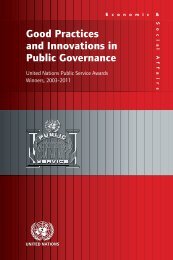a-collection-of-research-articles-on-the-medical-potential-of-cow-urine
a-collection-of-research-articles-on-the-medical-potential-of-cow-urine
a-collection-of-research-articles-on-the-medical-potential-of-cow-urine
You also want an ePaper? Increase the reach of your titles
YUMPU automatically turns print PDFs into web optimized ePapers that Google loves.
Review Article<br />
Journal <str<strong>on</strong>g>of</str<strong>on</strong>g> Intercultural Ethnopharmacology<br />
www.jicep.com<br />
DOI: 10.5455/jice.2015022210032<br />
Chemo<strong>the</strong>rapeutic <strong>potential</strong> <str<strong>on</strong>g>of</str<strong>on</strong>g> <strong>cow</strong><br />
<strong>urine</strong>: A review<br />
Gurpreet Kaur Randhawa 1 , Rajiv Sharma 2<br />
1<br />
Department <str<strong>on</strong>g>of</str<strong>on</strong>g><br />
Pharmacology,<br />
Government Medical<br />
College, Amritsar, Punjab,<br />
India, 2 Department <str<strong>on</strong>g>of</str<strong>on</strong>g><br />
Medicine, Guru Nanak<br />
Dev Hospital, attached<br />
to Government Medical<br />
College, Amritsar, Punjab,<br />
India<br />
Address for corresp<strong>on</strong>dence:<br />
Gurpreet Kaur Randhawa,<br />
Department <str<strong>on</strong>g>of</str<strong>on</strong>g><br />
Pharmacology, Government<br />
Medical College,<br />
Amritsar, Punjab, India.<br />
E-mail: kullar.g@gmail.com<br />
ABSTRACT<br />
In <strong>the</strong> grim scenario where presently about 70% <str<strong>on</strong>g>of</str<strong>on</strong>g> pathogenic bacteria are resistant to at least <strong>on</strong>e <str<strong>on</strong>g>of</str<strong>on</strong>g> <strong>the</strong><br />
drugs for <strong>the</strong> treatment, cue is to be taken from traditi<strong>on</strong>al/indigenous medicine to tackle it urgently. The Indian<br />
traditi<strong>on</strong>al knowledge emanates from ayurveda, where Bos indicus is placed at a high pedestal for numerous<br />
uses <str<strong>on</strong>g>of</str<strong>on</strong>g> its various products. Urine is <strong>on</strong>e <str<strong>on</strong>g>of</str<strong>on</strong>g> <strong>the</strong> products <str<strong>on</strong>g>of</str<strong>on</strong>g> a <strong>cow</strong> with many benefits and without toxicity.<br />
Various studies have found good antimicrobial activity <str<strong>on</strong>g>of</str<strong>on</strong>g> <strong>cow</strong>’s <strong>urine</strong> (CU) comparable with standard drugs such<br />
as <str<strong>on</strong>g>of</str<strong>on</strong>g>loxacin, cefpodoxime, and gentamycin, against a vast number <str<strong>on</strong>g>of</str<strong>on</strong>g> pathogenic bacteria, more so against<br />
Gram-positive than negative bacteria. Interestingly antimicrobial activity has also been found against some<br />
resistant strains such as multidrug-resistant (MDR) Escherichia coli and Klebsiella pneum<strong>on</strong>iae. Antimicrobial<br />
acti<strong>on</strong> is enhanced still fur<strong>the</strong>r by it being an immune-enhancer and bioenhancer <str<strong>on</strong>g>of</str<strong>on</strong>g> some antibiotic drugs.<br />
Antifungal activity was comparable to amphotericin B. CU also has an<strong>the</strong>lmintic and antineoplastic acti<strong>on</strong>. CU<br />
has, in additi<strong>on</strong>, antioxidant properties, and it can prevent <strong>the</strong> damage to DNA caused by <strong>the</strong> envir<strong>on</strong>mental<br />
stress. In <strong>the</strong> management <str<strong>on</strong>g>of</str<strong>on</strong>g> infectious diseases, CU can be used al<strong>on</strong>e or as an adjunctive to prevent <strong>the</strong><br />
development <str<strong>on</strong>g>of</str<strong>on</strong>g> resistance and enhance <strong>the</strong> effect <str<strong>on</strong>g>of</str<strong>on</strong>g> standard antibiotics.<br />
Received: January 16, 2015<br />
Accepted: February 22, 2015<br />
Published: March 07, 2015<br />
KEY WORDS:Antibiotic, antifungal, antineoplastic, bioenhancer, Bos indicus, immune-enhancer<br />
INTRODUCTION<br />
Infectious diseases remain a major threat to <strong>the</strong> public<br />
health despite tremendous progress in human medicine.<br />
Emergence <str<strong>on</strong>g>of</str<strong>on</strong>g> widespread drug resistance to <strong>the</strong> currently<br />
available antimicrobials is a matter <str<strong>on</strong>g>of</str<strong>on</strong>g> deep c<strong>on</strong>cern. A high<br />
percentage <str<strong>on</strong>g>of</str<strong>on</strong>g> nosocomial infecti<strong>on</strong>s are caused by highly<br />
resistant bacteria such as methicillin-resistant Staphylococcus<br />
aureus or multidrug-resistant (MDR) Gram-negative bacteria.<br />
Each year in <strong>the</strong> United States, about 2 milli<strong>on</strong> people<br />
become infected with antibiotic resistant bacteria and at<br />
least 23,000 people die every year as a c<strong>on</strong>sequence <str<strong>on</strong>g>of</str<strong>on</strong>g> <strong>the</strong>se<br />
infecti<strong>on</strong>s. Many more people die from o<strong>the</strong>r c<strong>on</strong>diti<strong>on</strong>s that<br />
are complicated by an antibiotic-resistant infecti<strong>on</strong> [1]. In<br />
2012, <strong>the</strong>re were about 450000 new cases <str<strong>on</strong>g>of</str<strong>on</strong>g> MDR tuberculosis.<br />
Extensively drug-resistant tuberculosis has been identified<br />
in 92 countries. Development <str<strong>on</strong>g>of</str<strong>on</strong>g> resistance to oral drug <str<strong>on</strong>g>of</str<strong>on</strong>g><br />
choice fluoroquinol<strong>on</strong>es, for urinary tract infecti<strong>on</strong>s caused<br />
by Escherichia coli is very widespread, <str<strong>on</strong>g>of</str<strong>on</strong>g>ten sensitivity<br />
remains <strong>on</strong>ly for injectables [2]. Infecti<strong>on</strong>s caused by<br />
resistant microorganisms <str<strong>on</strong>g>of</str<strong>on</strong>g>ten fail to resp<strong>on</strong>d to <strong>the</strong> standard<br />
treatment, resulting in prol<strong>on</strong>ged illness, higher health care<br />
expenditures, and a greater risk <str<strong>on</strong>g>of</str<strong>on</strong>g> death. There is a dire<br />
need for <strong>the</strong> development <str<strong>on</strong>g>of</str<strong>on</strong>g> new antimicrobial agents with<br />
sensitivity intact against microorganisms [3,4]. The rati<strong>on</strong>al<br />
designing <str<strong>on</strong>g>of</str<strong>on</strong>g> novel drugs from traditi<strong>on</strong>al medicines to treat<br />
<strong>the</strong>se difficult to treat infecti<strong>on</strong>s <str<strong>on</strong>g>of</str<strong>on</strong>g>fers a new prospect for <strong>the</strong><br />
modern health-care system.<br />
Ayurvedic texts (Sushruta Samhita, Ashtanga Sangrah and Bhav<br />
Prakash Nighantu) describe <strong>cow</strong> <strong>urine</strong> (CU) (gomutra) as an<br />
effective medicinal substance/secreti<strong>on</strong> <str<strong>on</strong>g>of</str<strong>on</strong>g> animal origin with<br />
innumerable <strong>the</strong>rapeutic uses. Cow (Kamadhenu) has been<br />
c<strong>on</strong>sidered as a sacred animal in India. In Rigveda (10/15),<br />
CU is compared to nectar. In Susruta (45/221) and in Charak<br />
(sloka-100) several medicinal properties <str<strong>on</strong>g>of</str<strong>on</strong>g> CU have been<br />
menti<strong>on</strong>ed such as weight loss, reversal <str<strong>on</strong>g>of</str<strong>on</strong>g> certain cardiac and<br />
renal diseases, indigesti<strong>on</strong>, stomach ache, diarrhea, edema,<br />
jaundice, anemia, hemorrhoids and skin diseases including<br />
vitiligo. Gomutra is capable <str<strong>on</strong>g>of</str<strong>on</strong>g> removing all <strong>the</strong> imbalances in<br />
<strong>the</strong> body, thus maintaining <strong>the</strong> general health [5]. CU c<strong>on</strong>tains<br />
95% water, 2.5% urea, minerals, 24 types <str<strong>on</strong>g>of</str<strong>on</strong>g> salts, horm<strong>on</strong>es,<br />
and 2.5% enzymes. It also c<strong>on</strong>tains ir<strong>on</strong>, calcium, phosphorus,<br />
carb<strong>on</strong>ic acid, potash, nitrogen, amm<strong>on</strong>ia, manganese, ir<strong>on</strong>,<br />
sulfur, phosphates, potassium, urea, uric acid, amino acids,<br />
enzymes, cytokine and lactose [6].<br />
CU is an effective antibacterial agent against a broad spectrum<br />
<str<strong>on</strong>g>of</str<strong>on</strong>g> Gram-negative and Gram-positive bacteria and also against<br />
some drug-resistant bacteria. It acts as a bio-enhancer <str<strong>on</strong>g>of</str<strong>on</strong>g><br />
some antimicrobial drugs. It has antifungal, an<strong>the</strong>lmintic,<br />
antineoplastic acti<strong>on</strong>, is useful in hypersensitivity reacti<strong>on</strong>s and<br />
180 J Intercult Ethnopharmacol ● Apr-Jun 2015 ● Vol 4 ● Issue 2









